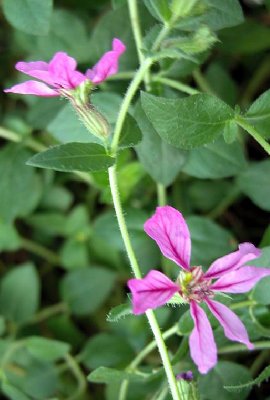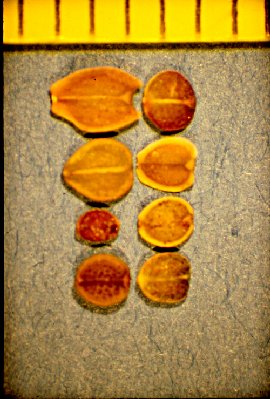Curator, Lythraceae, MBG
Research Interests
• Systematics, taxonomy, and floristics of the Lythraceae
• Forensic botany
• Systematics and phylogeny of Cuphea
Web Page: MBG
Evaluating Seed Characters in Lythraceae (purple loosestrife family). Shirley Graham is considered the world's leading expert on the systematics, phylogenetics, and floristics of the family Lythraceae. The family, with 28 genera and about 620 species, includes a number of important ornamentals and fruit crops, such as pomegranate, crape myrtle and Cuphea. Shirley currently works on the floristics and taxonomy of Lythraceae in Brazil, Mexico, Cuba, and Africa, incorporating morphology, anatomy, cytology, and molecular characters in her revisionary treatments. Dr. Graham seeks undergraduates to study the utility of seed characters as potential taxonomic and phylogenetic markers in these groups. Seeds, supported by vouchered specimens, are available for study for all genera. One unique seed character of interest is the remarkable mucilaginous trichomes of the seed coat. Upon wetting of the seed the trichomes evaginate through the epidermal cell wall to cover the seed surface, where they are believed to enhance uptake of water for seed germination. Trichome forms vary from straight to spiraled, and not all genera possess them. The internal seed anatomy is expected to offer additional phylogenetically informative characters. The student researchers will study general seed structure and learn to identify cell types in several genera and species. They will prepare permanent thin sections of seeds using a microtome, photograph sections and whole seeds using light microscopy and scanning electron microscopy, and prepare descriptions for selected genera of the family. Two students can be mentored. Students can participate as co-authors in the preparation of a manuscript for publication based on this research.
Selected Publications
• Graham, S. A., M. Diasgranados, and J. C. Barber. 2011. Relationships among the confounding African genera Ammannia, Hionanthera, Nesaea, and Rotala. Botanical Journal of the Linnean Society 166: 1-19.
• Graham, S. and T. B. Cavalcanti. 2010. Lythraceae. In: Milliken, W., B. Klitgaard, A. Baracat, and N. Hind (eds.). Neotropikey- Interactive key and information resources for flowering plants of the Neotropics (accessed June 22nd, 2010).
• Barber, J. C., A. Ghebretinsae, and S. A. Graham. 2010. An expanded phylogeny of Cuphea (Lythraceae) and a North American monophyly. Plant Systematics and Evolution 289: 35-44.
• Graham, S. A. 2010. Revision of the Caribbean genus Ginoria (Lythraceae), including Haitia from Hispaniola. Annals of the Missouri Botanical Garden 97: 34-90.
• Graham, S. A. 2007. Lythraceae. In: Kubitski, K. and S. Renner (eds.), The Families and Genera of Vascular Plants 9: 226-246. Springer-Verlag, New York.
• Graham, S. A., J. Freudenstein, and M. Luker. 2006. A phylogenetic study of Cuphea (Lythraceae) based on morphology and nuclear rDNA ITS sequences. Systematic Botany 31: 764-778.
• Graham, S. A., J. Hall, K. Sytsma and S.-H. Shi. 2005. Phylogenetic analysis of the Lythraceae based on four gene regions and morphology. International Journal of Plant Science 166: 995-1017.
 |
 |